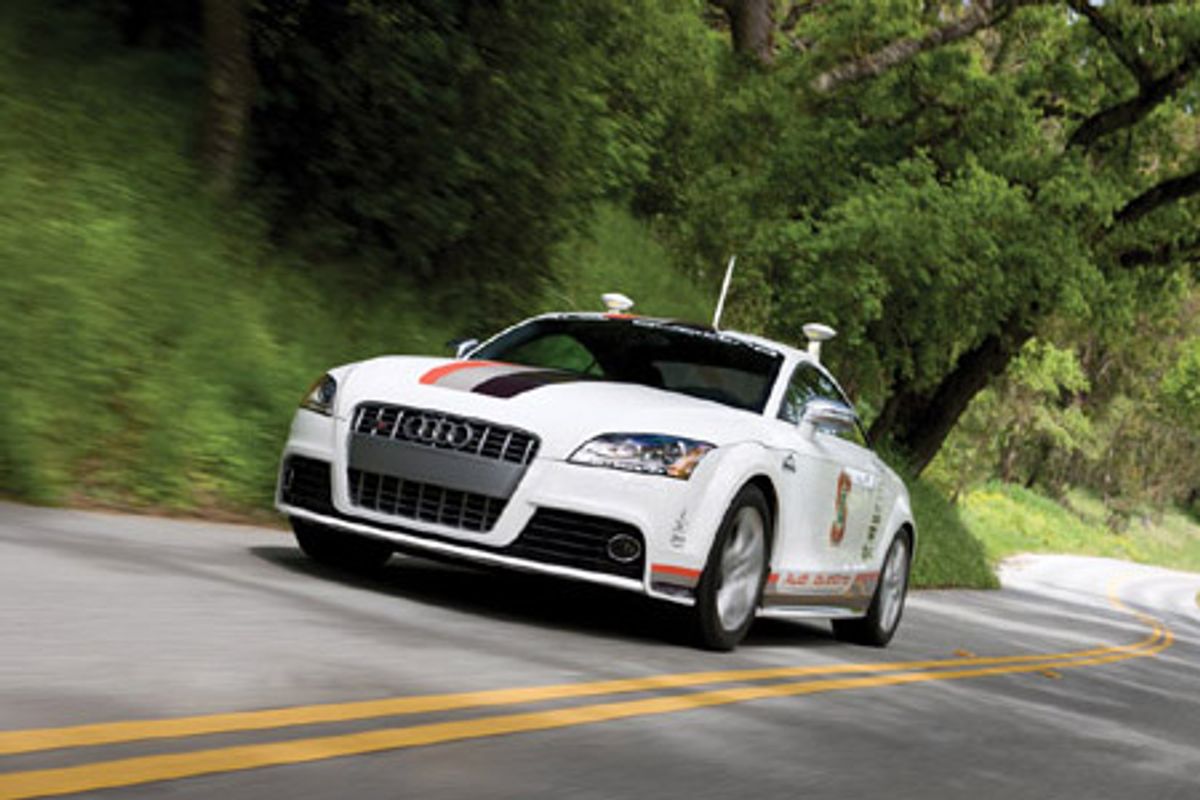We first met Stanford's robotic Audi TTS back in 2009, and while it's managed to climb Pike's Peak all by itself, it didn't do so in a time that was all that impressive. More recently, Stanford let Shelley off the leash at California's Thunderhill Raceway, where it almost (almost!) destroyed all human drivers with some aggressive laps around the track.
Unlike those Google autonomous cars, Shelley can't navigate in traffic or in unfamiliar environments. She just uses GPS to get where she's going, and she'll plow right through anything that gets in her way, which is why she's restricted to racetracks. Her talents lie in her ability to sense the limits of her own performance, which allows her to drive right on the edge of what's physically possible.
On Thunderhill, Shelley clocked times that were close to (but not better than) professional human drivers, probably because the exactly line that the car calculated and followed proved to be slightly less efficient than a "smoother," optimized path that a human might choose. To fix this, Stanford is sending professional drivers around racetracks while hooked up to brainwave sensors to see if they can figure out where on the track humans have to concentrate and think ahead.
The point of all of this, besides a concerted effort on the part of Stanford to render NASCAR obsolete, is to teach your car how to drive on the edge of control. Potentially, this could save your life: since it's probably safe to assume that you don't have the experience of a professional race car driver, if your car does, it can take over if necessary (like, in the event of an impending accident) and successfully steer you to safety.
Via [ Stanford ]
Evan Ackerman is a senior editor at IEEE Spectrum. Since 2007, he has written over 6,000 articles on robotics and technology. He has a degree in Martian geology and is excellent at playing bagpipes.




